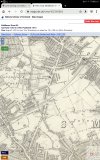DelW
Established Member
- Joined
- 15 Jan 2015
- Messages
- 3,885
The original road route northwards from the West End to the Great North Road went via Kentish Town and Highgate West Hill. That involved a steep climb, so when Archway Road was built, bypassing Highgate village with an easier gradient, Junction Road was built to connect to it. The railway and its eponymous junction came later.
The earliest map I can see on the NLS site shows Junction Road, after the Tottenham and Hampstead line was built but before the connection to the Midland, so the junction does not yet exist.
Map screenshot here:

The earliest map I can see on the NLS site shows Junction Road, after the Tottenham and Hampstead line was built but before the connection to the Midland, so the junction does not yet exist.
Map screenshot here:

